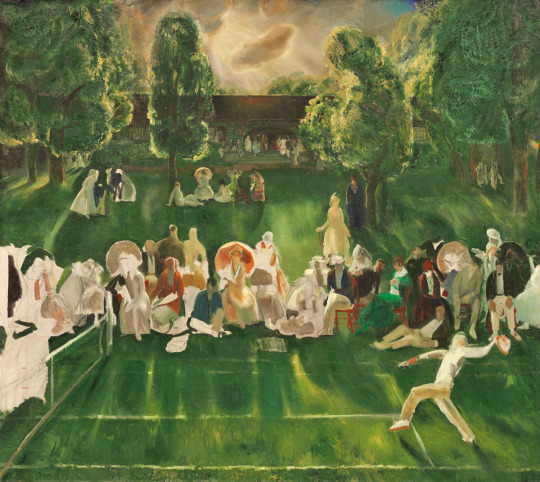#george bellows
Explore tagged Tumblr posts
Photo

Between Rounds No. 1, George Bellows, 1916
Lithograph 51.5 x 41.2 cm (20 ¼ x 16 ¼ in.) Yale University Art Gallery, New Haven, CT, USA
#art#george bellows#realism#ashcan school#1910s#print#yale university art gallery#american#the eight#boxing#sports#100 notes
138 notes
·
View notes
Text

A Stag at Sharkey's (George Bellows, 1909)
1K notes
·
View notes
Photo

A Stag at Sharkey’s, George Bellows, 1917
#art#art history#George Bellows#George Wesley Bellows#lithograph#genre painting#boxing#Ashcan School#The Eight#Realism#Realist art#American Realism#American art#20th century art
497 notes
·
View notes
Text

George Bellows, Stag at Sharkey’s (1909)
478 notes
·
View notes
Text

107 notes
·
View notes
Text

George Bellows (American, 1882–1925)
Two Girls, 1917
438 notes
·
View notes
Text

George Bellows, Both Members of this Club, 1909 Image released into the public domain.
29 notes
·
View notes
Text

George Bellows - Reducing, Small, Third Stone. (1921)
116 notes
·
View notes
Text

Club Night (1907) | George Bellows (1882-1925) | rawpixel
33 notes
·
View notes
Text

lovelyangryheart
George Bellows (American 1882-1925) Dempsey and Firpo, 1924
14 notes
·
View notes
Text

George Bellows Nude Girl, Miss Leslie Hall 1909
79 notes
·
View notes
Text

George Bellows
Geraldine Lee No. 2, 1914
The Butler Institute of American Art
#(going off of the info on these post cards I know this painting has moved)#george bellows#painting#art
34 notes
·
View notes
Text

Summer Night, Riverside Drive (George Bellows, 1909)
356 notes
·
View notes
Text

Title: Edge of the Pasture -- Glow of the Sun Artist: George Bellows (American, 1882-1925) Date: 1916 Genre: landscape painting Movement: Ashcan School Medium: oil on panel Dimensions: 45.7 cm (17.9 in) high x 55.9 cm (22 in) wide Location: private collection
#art#art history#George Bellows#landscape#landscape painting#landscape art#Maine#New England#Ashcan School#The Eight#American Realism#American art#20th century art#oil on panel#private collection
137 notes
·
View notes
Text

George Bellows - Storm Sea (1913)
41 notes
·
View notes
Text

George Bellows (American, 1882-1925), Tennis Tournament, 1920. Oil on canvas, 59 x 66 in.
205 notes
·
View notes